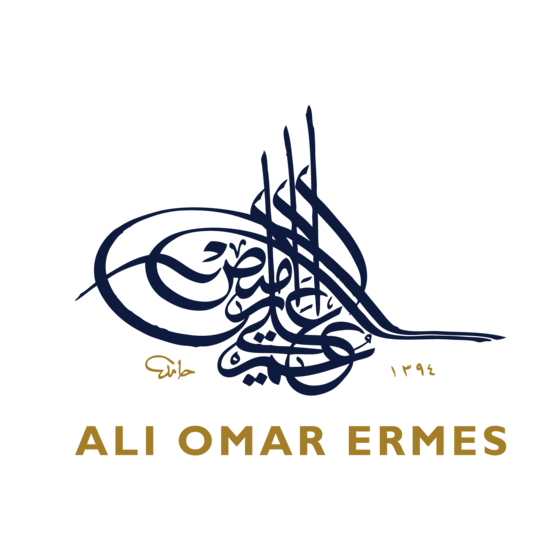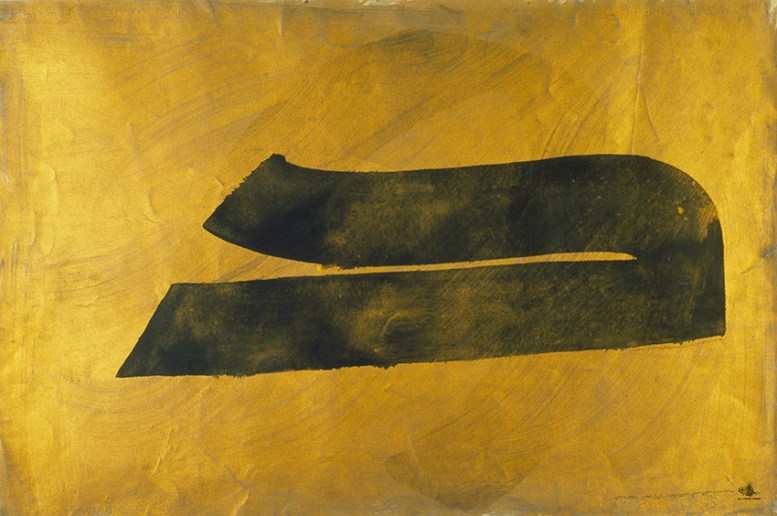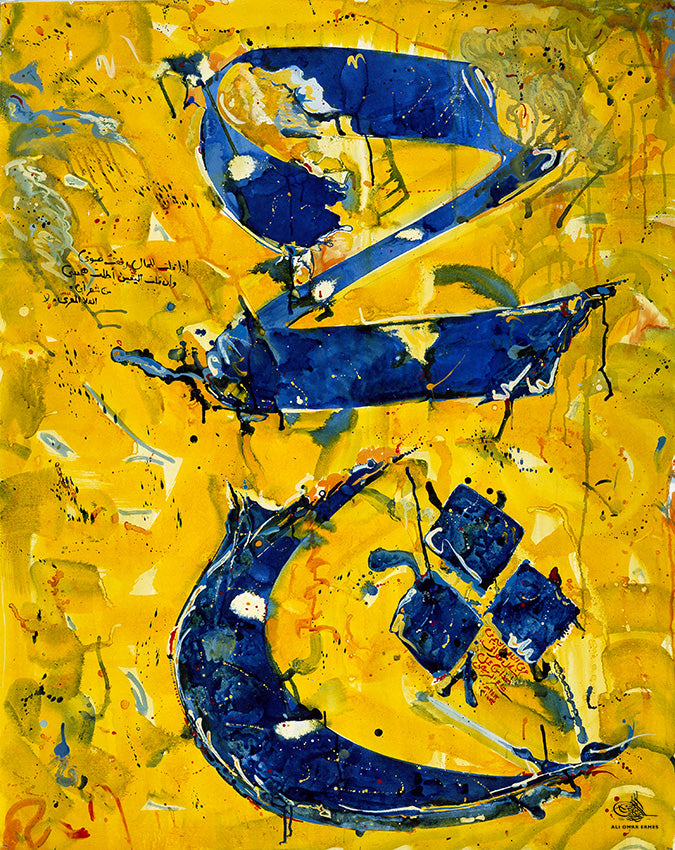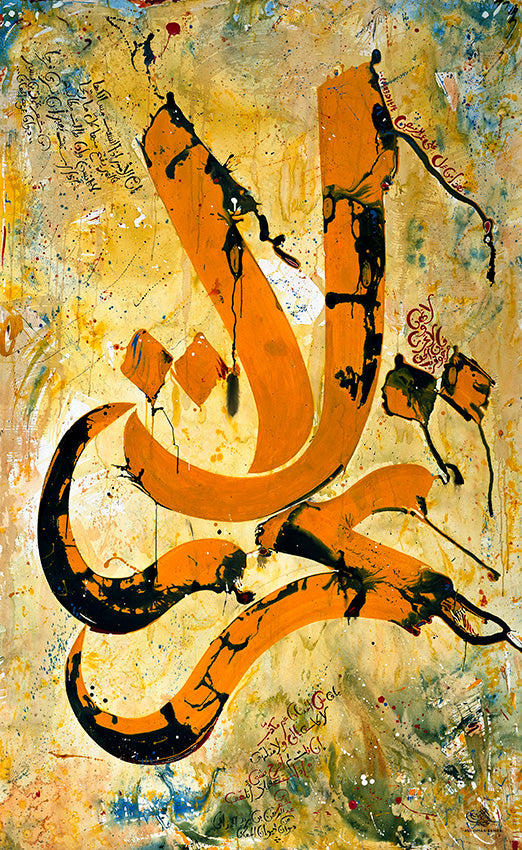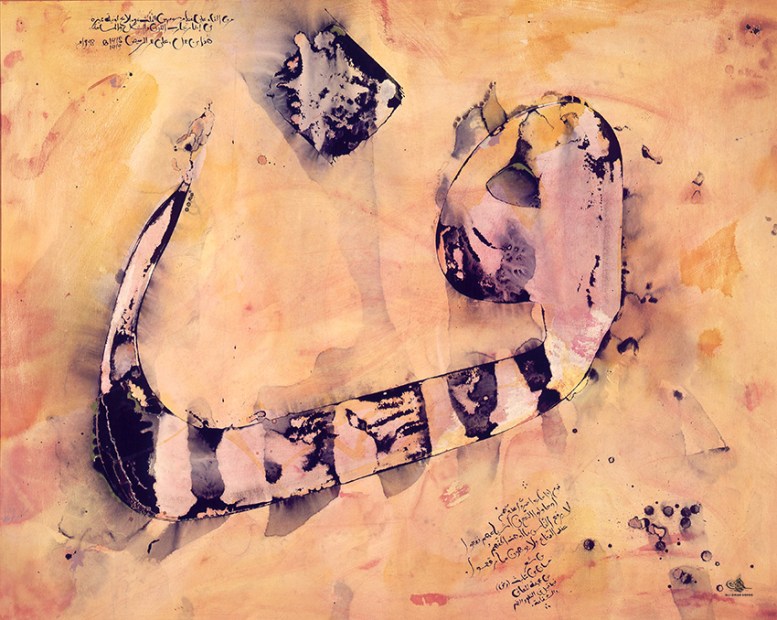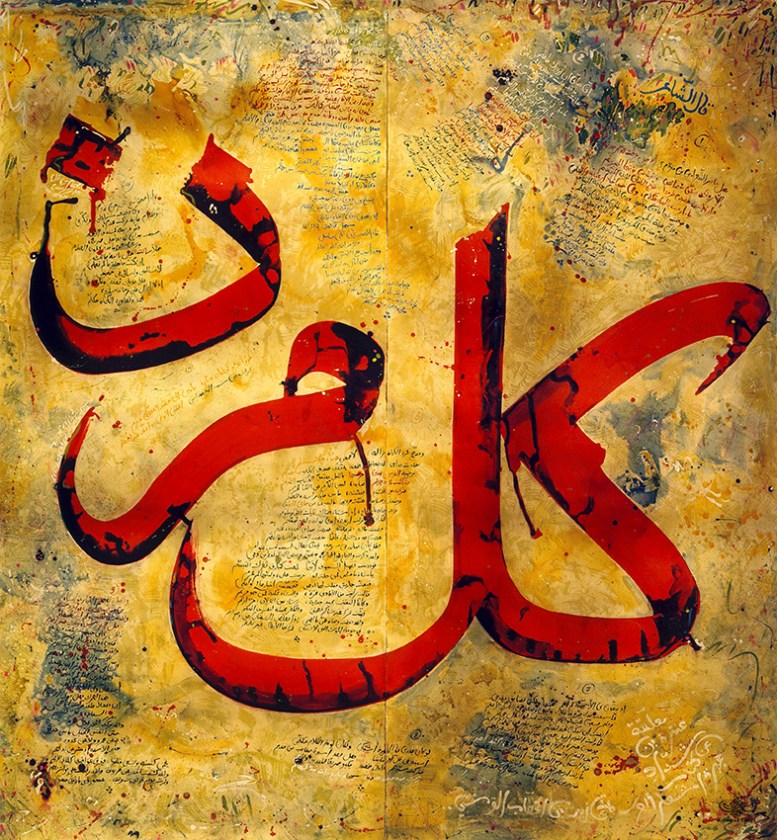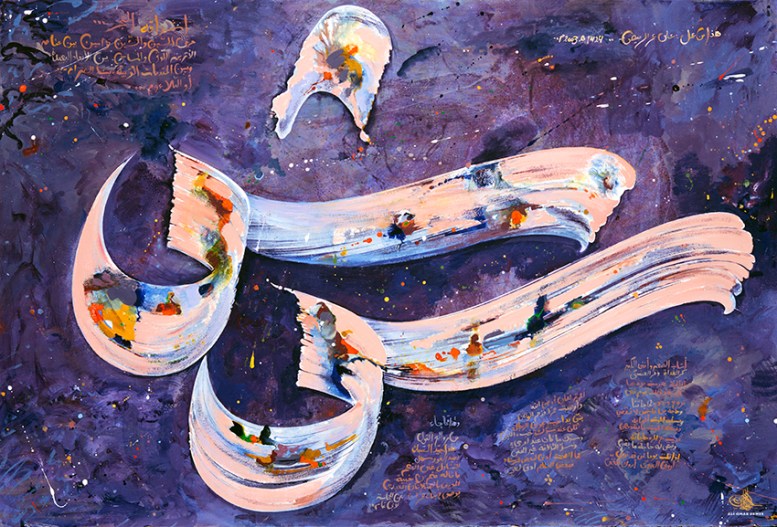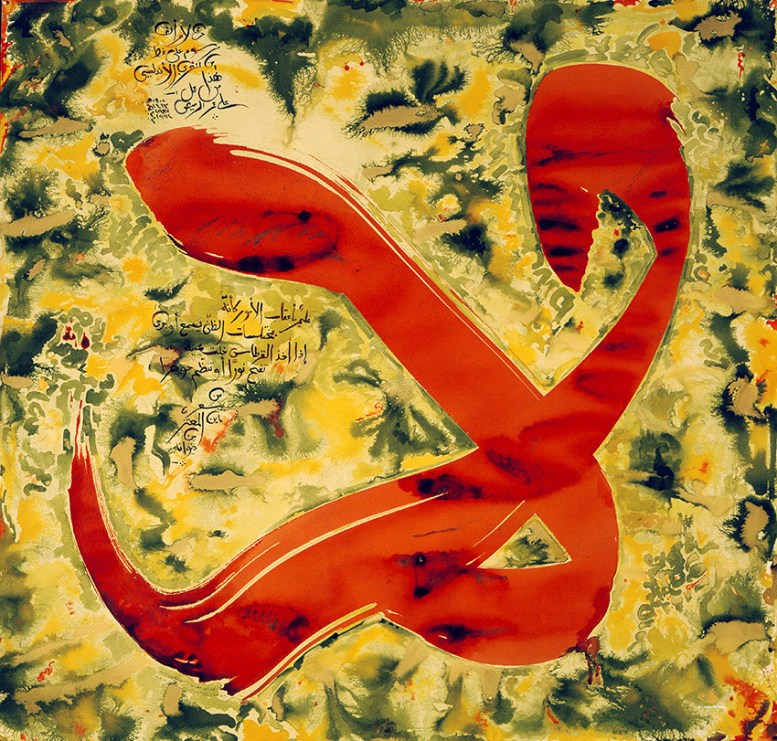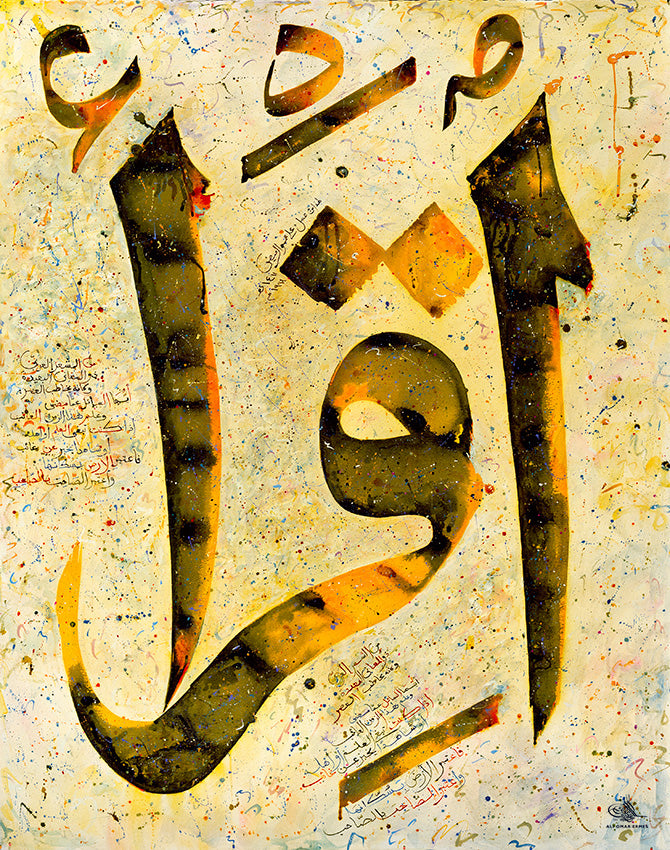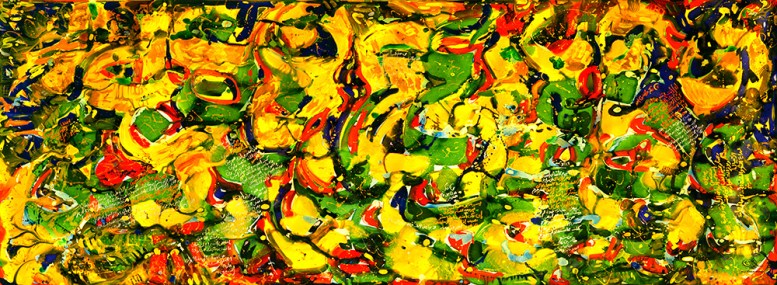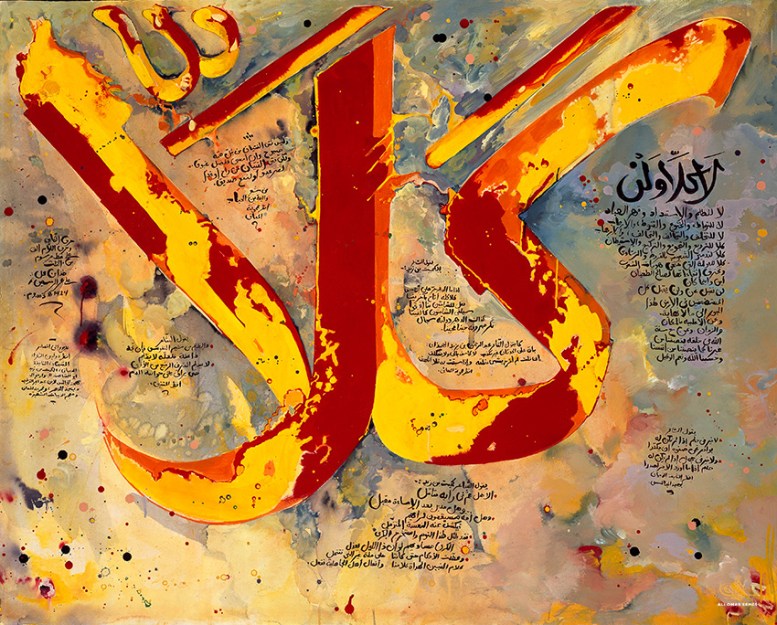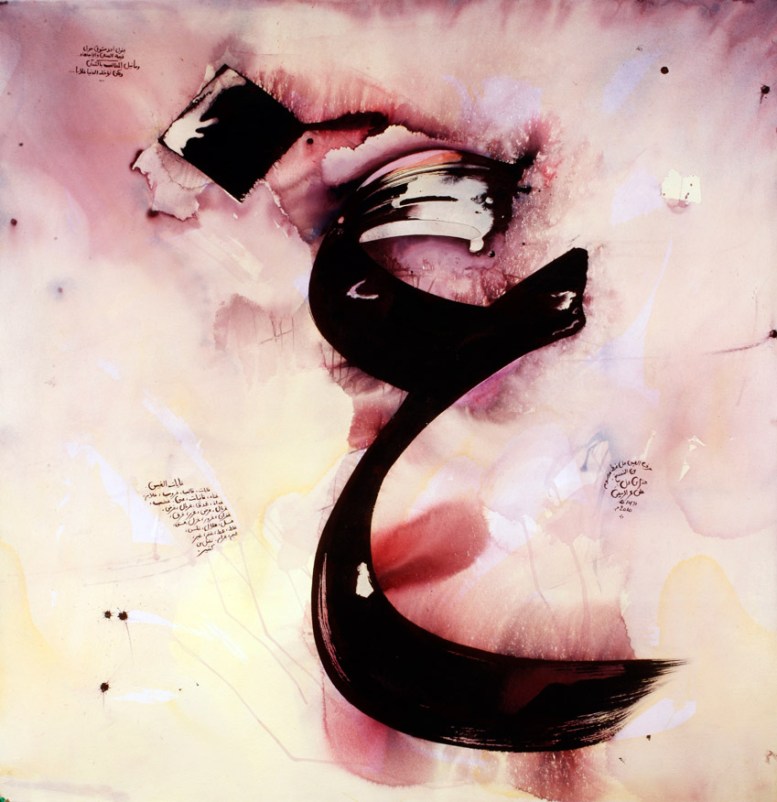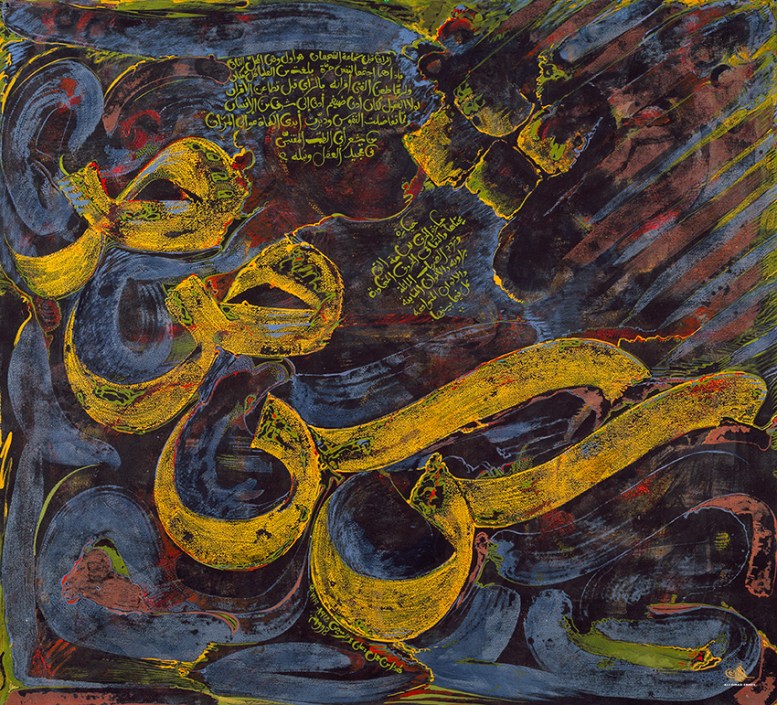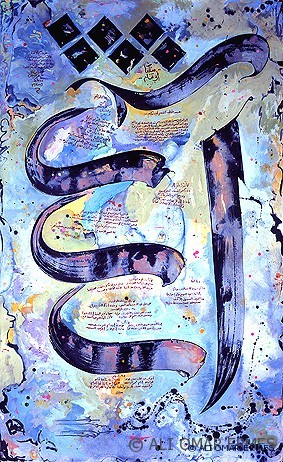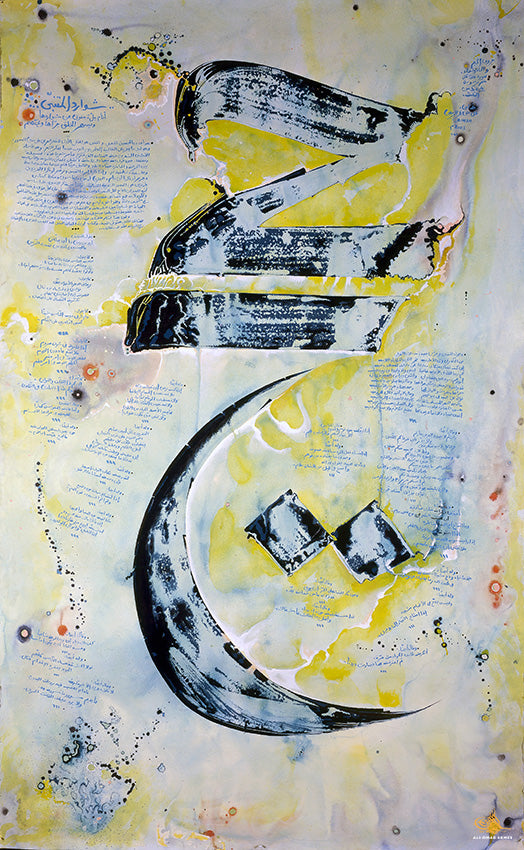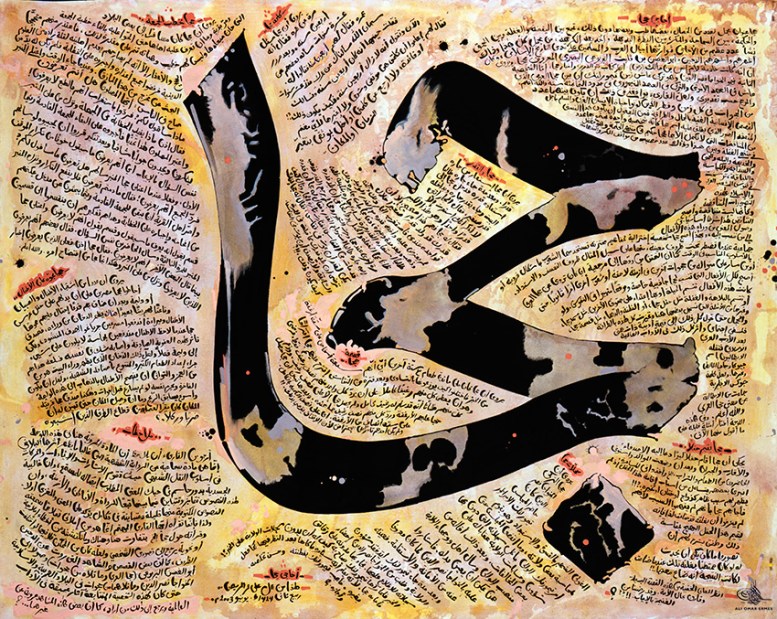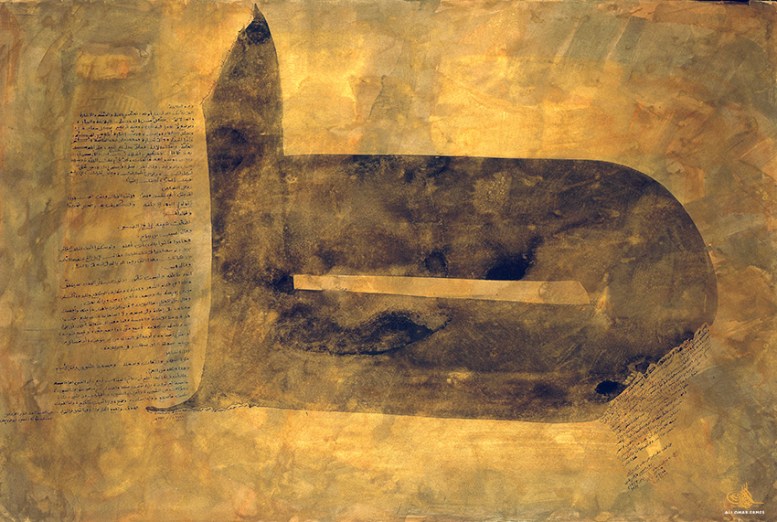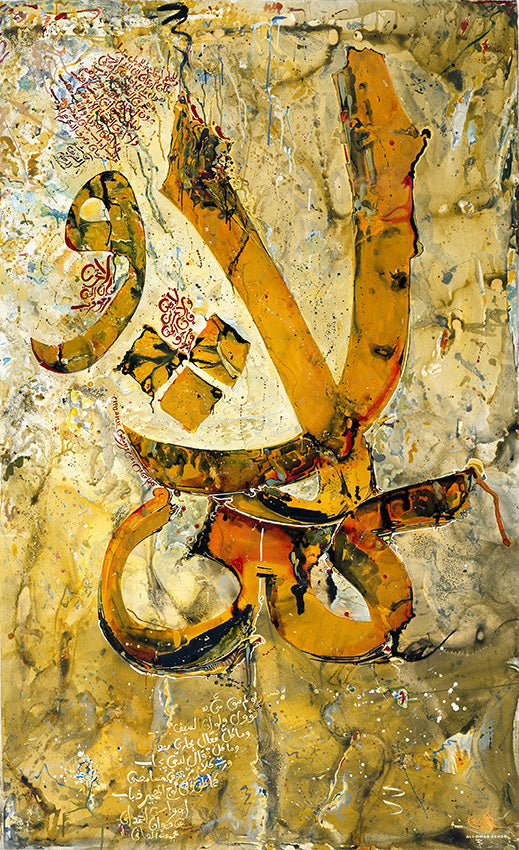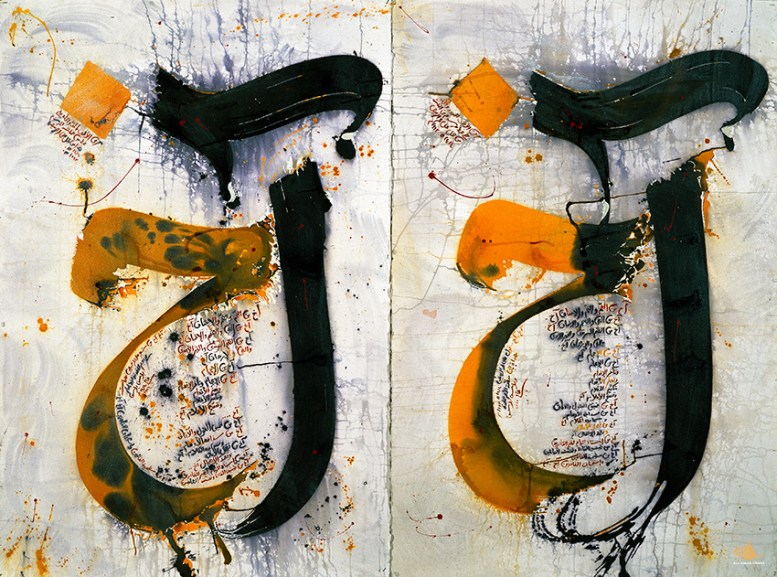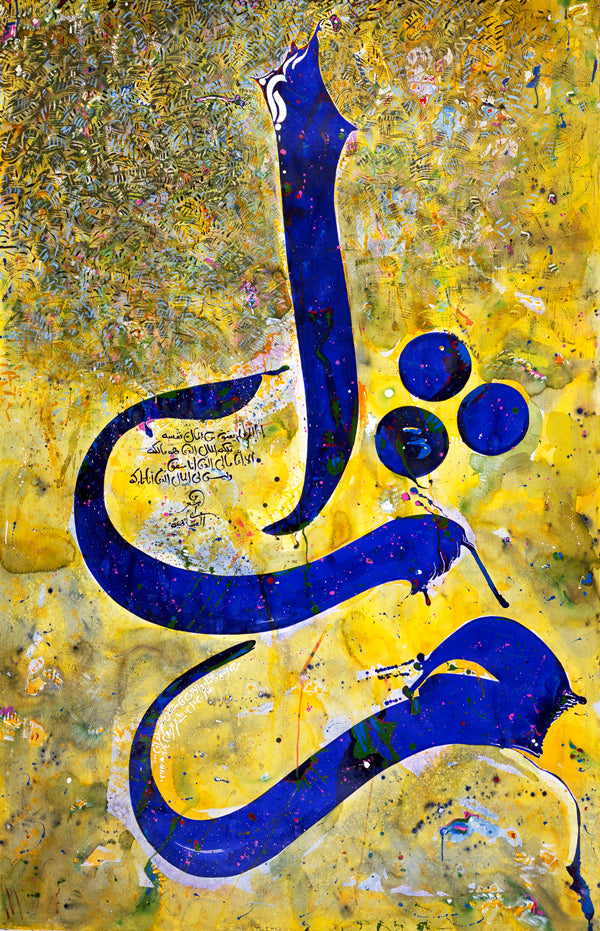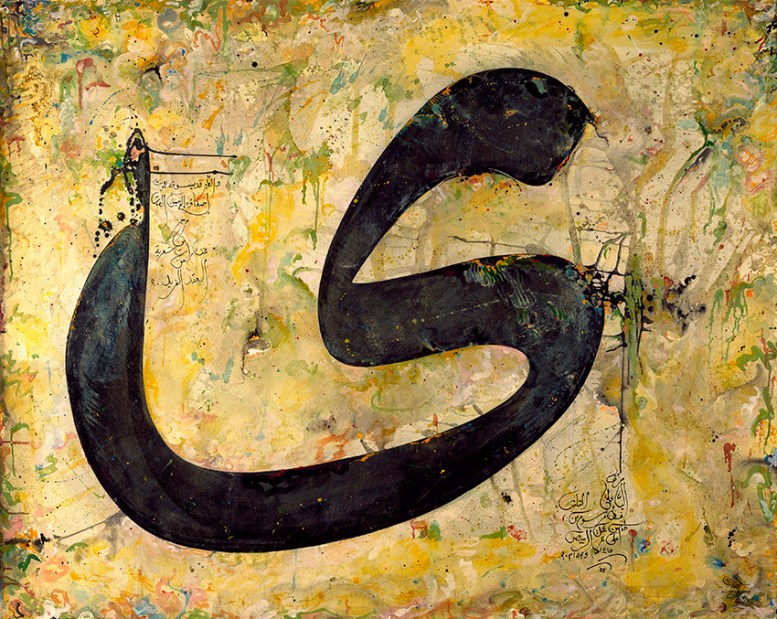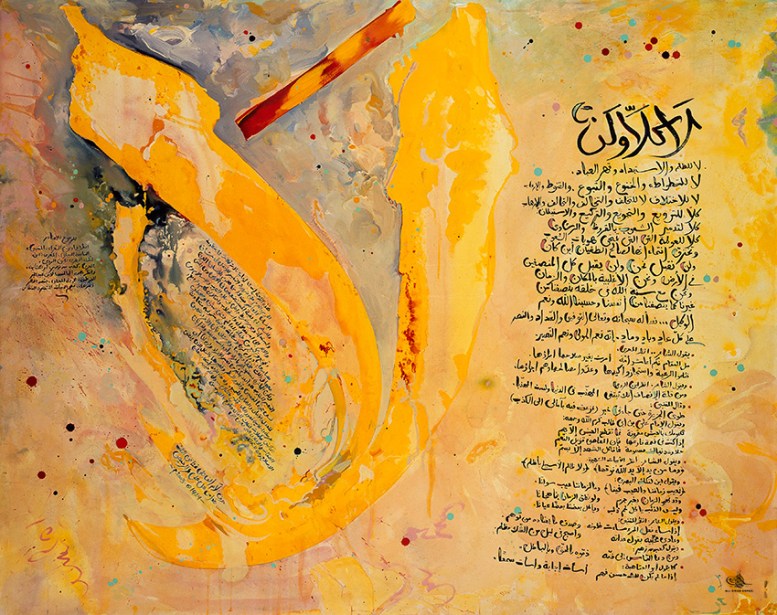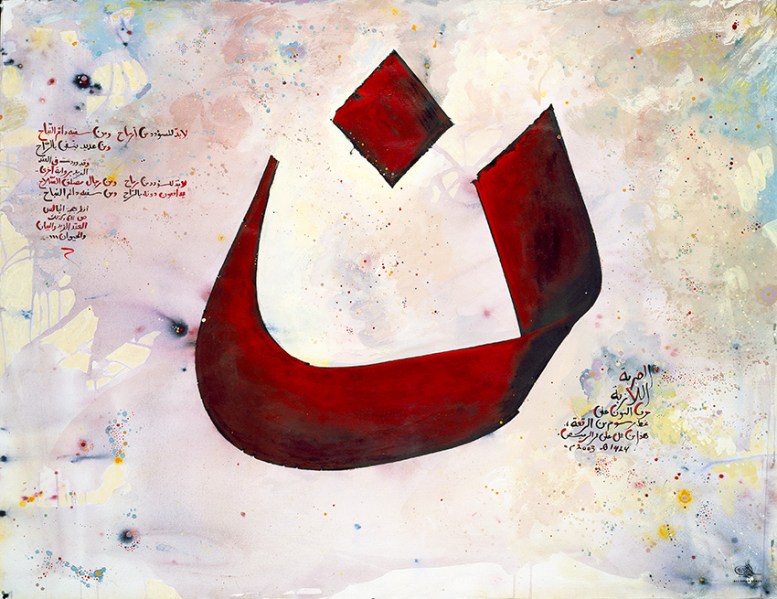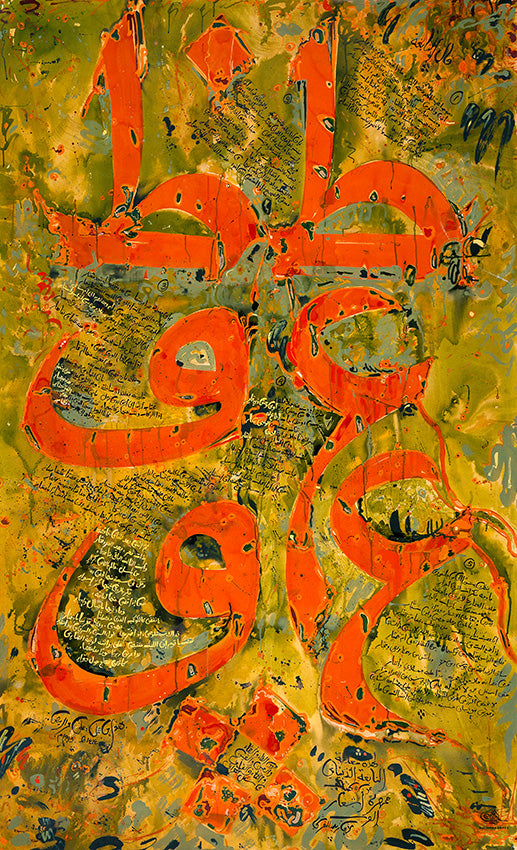Harf Ul Dal
"The Romance of a Single Stroke: An Ode to the Power of Arabic Language and Expression"
This captivating artwork pays tribute to the timeless art of the single-stroke technique, a hallmark of the renowned artist Ali Omar Ermes. Through the power of this minimalist yet expressive method, the piece explores the vast and poetic depths of the Arabic language. From the simplest of strokes to the most intricate, the technique allows for the creation of impressions that are as moving as the emotions they convey.
Tughra - Whispers of Truth: An Exploration of the Power of Language
"Whispers of Truth: An Exploration of the Power of Language"
This striking artwork delves into the complexities of truth and the ways in which it is perceived and communicated. Featuring a poignant verse from the philosopher-poet Abul Ala Al Ma'arri, the piece reflects on the idea that sometimes the truth must be whispered, even in the face of injustice or disbelief.
La Tahzann – Do Not Despair: An Empowering Reminder to Stay Strong and Persevere
The Bosnia war, which took place in the 1990s, was a brutal and devastating conflict marked by widespread atrocities, including ethnic cleansing and genocide. The suffering of the Bosnian people during this time was immense, as they were subjected to unimaginable horrors and loss.
Letter Form Fa
The Sixth Ode
This is one of a group of seven paintings that celebrates the Seven Odes of Arabic poetry, Al Muallaqat As Sabaa or Prize Poems, which enjoy a special place in Arabic literature due to their power of eloquence and historic relevance.
When a poem was judged to be exceptional, it was embroidered in gold on silk cloth and hung on the Kaaba as a sign of general acclaim. Over the years, the Prize Poems which were thus hung at the Kaaba assumed a universal context and appeal.
The Dawn Break
Between the elements of colours and sound, it is self-evident that we have a state of comprehension, a state of wanting for new beginnings.
Poems by Qotam Ebni Khabeeh, known as Sullotan, advising his son in a storytelling manner about life and values, this piece of poetry has a very rare property of combining the deadliest serious of all matters in the most beautifully sweet and musically moving sounds. Where you forget that what you hear is so deadly serious and some times frightening about life and responsibility to the point of panic.
Ali Omar Ermes With Afaq Calligraphy – BBC عربي
في هذه الحلقة من آفاق يتحدث الفنان والمفكر الليبي علي عمر الرميص عن اعماله الفنية واهمية الخط العربي كما نتابع اجمل انواع الخطوط العربية من تونس ومن لبنان مع الخطاط فارس ملاعب ومن باريس مع الفنان والخطاط غني العاني اضافة الى آثار الامازيغ في ليبيا كما تشاهدون معرض حد في لندن لفنانات عربيات منعت اعمالهن من العرض في بلادهن. آفاق من اعداد وتقديم وسام الصايغ
Lam Alif Libnul Muttazz
This stunning piece displays the power of contrast in colour. The clear-cut ideas, between the visual and the writing in poetry.
The poem featured in this artwork is by Abbassi Amir Ibnal Muttaaz.
It reflects the historical state of the Abbassid Caliph in the Amir Al Mu’mineen’s times in the ninth century at the heart of the Arab lands and Muslim civilisation.
Reflections on the Art of Ali Omar Ermes
Riad Nourallah is Senior Lecturer at the Diplomatic Academy of London.
Seeing Ali Omar Ermes in his studio with brush flowing on paper, one cannot but recall the uncanny ease and confidence with which the great painters move their brushes on canvas or accomplished dancers move their bodies on stage, a deceptive ease about which education and training can offer only a partial explanation, and a confidence that seems to mock our daily doubts and countless stumbles and hesitations. And though one has to acknowledge every artist’s, and Ermes’ own, indebtedness to a long and rich tradition, one will inevitably be reminded of T.S. Eliot’s image of a museum (as a metaphor for a nation’s and by extension the world’s cultural heritage) being reorganized, enhanced and updated by every new talent and contribution.
Ananah (Narrative Stream)
Kalla
La, Kalla, Wa Lau – This is a trio.
Recalls samples of poetry which rejects domination by big powers as much as it rejects acts of terrorism by individuals, states or invading armies as much as it condemns corruption, environmental and cultural abuses.
Introduction to Ali Omar Ermes’ Artwork
Possession
These are the letters seen, sheen, Ssadd and dhad in a form where the structure of the artwork is held tightly by the composition structures.
The poetry is by Al Motannabbi who says:
Muthaqafat Abi Tammam
Shawared Al Motannabbi
Al Motannabbi is one of the few poets in Arabic Literature where people recall poetry in its absolute meaning when they hear his name. Even though Arabic literature is rich with thousands of highly important poets who affected the human spirits with their power of beauty in their poetic expression throughout history. So Al Motannabbi is synonymous with poetry and as he said a long time ago (during the Abbasid times, 1,200 years or so), that he releases his breath of poetry in a casual unintentional way and people engage in the fiercest of debates and arguments about them for the rest of their lives. Within the artwork, Ali Omar Ermes has gathered a few of these for the viewer’s benefit.
Ahaje Juha
Juha was and still is a very important figure in Arabic literature (mainly the verbal literature) and Juha was a name for Dujain ibn Thabit in the early days of Islamic civil society (1,400 years approx.) with a very rich collection of humour in contradicted forms of wisdom and foolish or unpredictable material, which all make a sounding point of view towards people, politics and behaviour of the society in all its endeavours.
At Taa, Field of Eloquence
The painting has quotes from Al’Aqd Al Farid on the four principal paths that eloquence can take by way of assertion, inference, writing, and gesture.
La Tahinn: Do Not Allow Self-degradation
At a glance, this artwork presents a strong culture, an array of fresh, pleasant colours handled with ease and splendor.
Poems by Abi Firas Al Hamadani about standing head high dignified and proud even tho ugh the world could be against you.
Aaakhen Akh!
Meem, Tha, Alif – Turaath (Heritage) - تراث – م ت أ
A symbol of heritage, as we inherit what we inherit to appreciate and to look after this heritage, thus enabling it to reach the next generations.
The poem is by the Abbasid poet Abu Al-Ataahiah, who tells us
Contradictions of Joy
The abstract imagery of the work is complemented by a poetical quip that the melody of a songbird while being sweet can also be fatally overwhelming – in other words, in joy, there is sorrow too.
La (No)
This artwork is one of a trio.
It recalls samples of poetry which reject domination by big powers as much as it rejects acts of terrorism by individuals, states or invading armies as much as it condemns corruption, environmental and cultural abuses. Lines of poetry expressing in general or some in specific terms that we are all in this together.
Noon – the Sharp and Competent
The Fifth Ode
This is one of a group of seven paintings that celebrates the Seven Odes of Arabic poetry, al muallaqat as sabaa or Prize Poems, which enjoy a special place in Arabic literature due to their power of eloquence and historic relevance.
When a poem was judged to be exceptional, it was embroidered in gold on silk cloth and hung on the Kaaba as a sign of general acclaim. Over the years, the Prize Poems which were thus hung at the Kaaba assumed a universal context and appeal.
